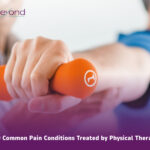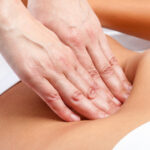Fall Prevention Home Physical Therapy can be essential for the aging population. Research shows that more than 25% of those over the age of 65 fall, and of that, 75% of them fall in their own home. Wikipedia states that: “Nearly one-third of older persons fall each year, and half of them fall more than once.” For more interesting information from the Wikipedia page that is specifically concerned with the topic of Fall Prevention you can click here: https://en.wikipedia.org/wiki/Fall_prevention
Having a fall doesn’t just affect someone physically, but also emotionally. With a severe fall, one may experience a severe break requiring surgery or Fall Prevention Home Physical Therapy Rehabilitation. Once you a have one fall, you are predisposed to have another.
As we get older, we tend to get stiff, lose mobility, and agility. All of this increases our chance of falling. Having had a previous injury in our early years, such as a sprained ankle, minor knee surgery or back pain, will also contribute to fall risk when we are older.
Falling is one thing, but falling and breaking a bone is another. Fall Prevention Home Physical Therapy becomes more pertinent as we get older, but prevention is the key word here. It is not about rehabilitation after a fall, rather about preventing it.
Fall Prevention Home Physical Therapy sessions incorporate a variety of static and dynamic movements that challenge your mind and body. Challenging your strength, range of motion, coordination and vision all play a part. Its about how our brain communicates with our body, and vice versa.
Considering most falls occur within the comforts of our own home, Fall Prevention Home Physical Therapy can be a huge benefit to a patient. It not only eliminates driving to an appointment, but it allows for an all encompassing evaluation and treatment customized for you and your home.
Here are a few tips if you or someone you know has had a fall or would benefit from Fall Prevention Home Physical Therapy:
1. Remove area rugs:
It is so easy to trip on the edge of a rug in your living room, bathroom or bedroom. Eliminate them to prevent a fall from occurring.
2. Add railings:
Do you have steps leading up to your front door? Do you live in a two story house? Make sure there is at least one if not two railings to hold on to. Prevent a trip or slip simply walking in and around your home.
3. Tub and Shower Mats:
Here is where mats are useful. Placing a suctioned mat on the bottom of your bathtub or shower is essential. With these slippery wet surfaces, the chance of slipping and falling increases.
4. Practice standing with your eyes closed:
Standing next to the kitchen counter or table, place your feet next to each other. Now, try standing still and close your eyes. Are you able to stand still? Do you sway back and forth? We rely heavily on our vision when it comes to balance. Challenging our muscles and joints with our eyes closed helps our brain know where our body is in space.
5. Standing on one leg:
While holding onto the counter or bathroom sink, try standing on one leg. Can you do it? Did you lose your balance right away? Standing on one leg improves our balance and our strength in our leg muscles and core. Try doing this daily, alternating sides. The goal is to stand on one one foot without holding on to something for one minute.
6. Talk to your Doctor:
If you are taking four or more prescription drugs, talk with your doctor. You are at risk of falling. Discuss what meds may or may not be necessary, as they could be affecting your muscle strength, balance and coordination increasing your chance of falling.
Webmd also has some good tips for outdoor as well as indoor Fall Prevention Home Physical Therapy, https://www.webmd.com/osteoporosis/guide/fall-prevention-strategies
















